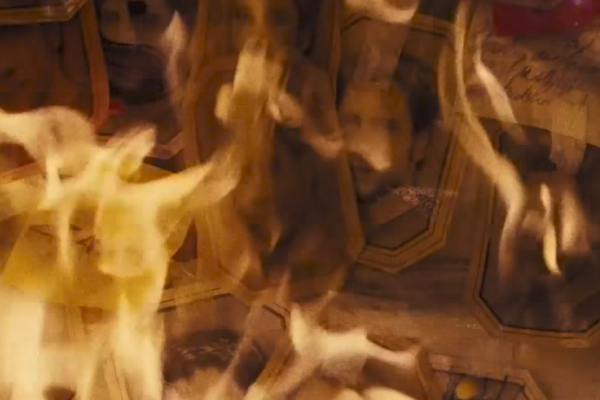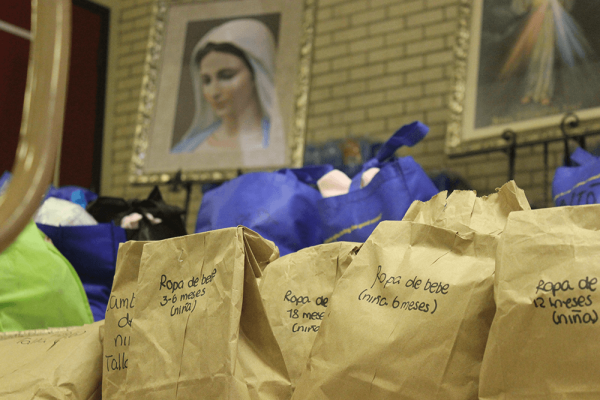Darren Aronofsky’s film mother! is heavy on religious symbolism, taking plot points from the Bible and several visual cues from classic religious art. As art itself, the movie is — among many other metaphors — an intriguing take on the inherent sinfulness and exploitativeness of humankind, one that explores our tumultuous relationship with God.
From a Christian theological perspective, it’s also a very flawed movie. Aronofsky’s view of faith seems rooted in a vengeful, Old Testament version of God. It’s a view without any form of grace, in which the very idea of forgiveness plays like a cold, sarcastic joke.
Late in the film, this worldview manifests an extremely upsetting moment. The titular mother (Jennifer Lawrence) has just given birth to a baby boy while holed up in her bedroom with her husband (Javier Bardem), a poet. A mob outside has come to pay homage to Bardem. He takes the baby to show to his followers. Lawrence runs out of the room just in time to see them break the infant’s neck as they hold him aloft. When she reaches the room where they’ve taken the child, Lawrence finds masses of people now eating her baby’s carcass.
Of course, this is an upsetting scene, but it’s particularly troubling from a faith-based perspective. It’s a grotesquely literal take on the Eucharist. It also fundamentally misses what communion means.
Given how Aronofsky expresses his thoughts on faith, it’s not surprising that he’d consider communion to be one way in which humans desecrate God’s gifts. But the point of communion, in Protestant tradition, isn’t to charge up our blessing batteries for another week of sin. It’s a time to come together as a community, humble ourselves before God, and acknowledge our need for salvation, as well as our connections to each other as members of the body of Christ.
A film that sprang to mind as I thought about this scene was one that stands on the opposite end of the spectrum from the nihilism of mother!, one that gets the heart of communion right. It’s the final scene of Robert Benton’s 1984 film Places in the Heart, a movie that focuses on systemic sin yet takes a vastly different position.
In the film, Sally Field plays Edna Spalding, the wife of a sheriff in depression-era Texas. Early on, her husband is accidentally shot and killed by a young black boy, who is then lynched by a mob. Left with a failing cotton farm and two kids, Edna stays in her home with the help of Mr. Will (John Malkovich), a blind man she takes in as a boarder, and Moze (Danny Glover), a drifter she hires to help grow and sell her cotton crop. Through their relationships with each other, the characters recognize the sin that runs deep through their community, and the hurt that sin causes others.
The final scene takes place in church. After the pastor reads from 1 Corinthians 13 (“Love is patient, love is kind…”), the congregation takes communion, passing the elements, gradually revealing the presence of all the characters in the film — including ones who have left or died. In the film’s final shot, the communion plate passes from Moze, to Mr. Will, to Edna, to her dead husband, and finally to the boy who killed him. It shows communion as a powerful spiritual moment, one when, as N.T. Wright puts it, “the veil (between Heaven and Earth) seems particularly thin.”
Taken together, the scenes from these two films present an interesting dialogue. There are plenty of people who share the feelings Aronofsky expresses in mother!, the idea that our cries for forgiveness are pleas to a God who either doesn’t care, or doesn’t want to hear it.
But the way to respond to a challenging movie like this, and to those who share its worldview, isn’t to dismiss them — mother! is far too ambitious and interesting a film for that.
One way to respond instead is to use mother! as an opportunity to discuss where points of view differ. Both mother! and Places in the Heart recognize the inherent sinfulness of people. But the human treatment that those sinners get in Benton’s film is far more compassionate, and closer to the truth and hope of faith, than the grotesque violence we get from Aronofsky.
Got something to say about what you're reading? We value your feedback!







